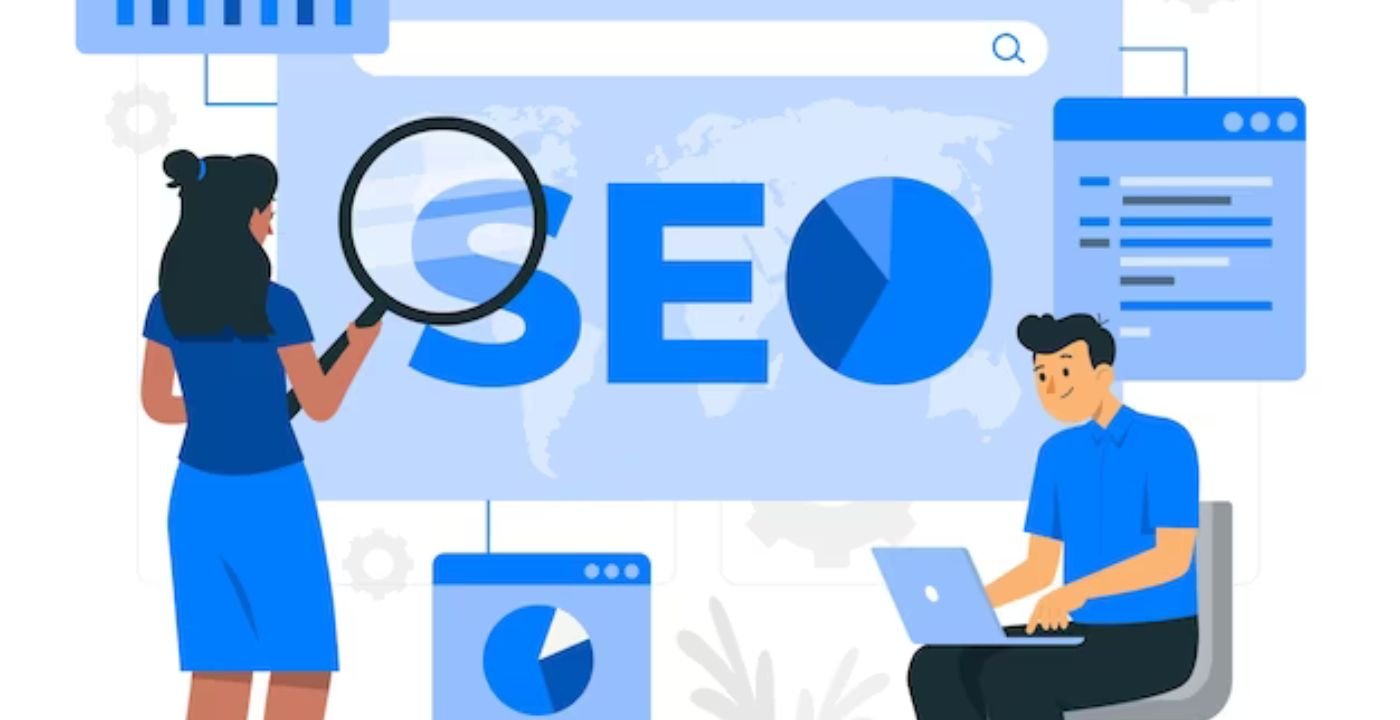What is SEO?
The technique of improving websites to generate traffic using natural methods compared to paid methods is known as search engine optimization, or SEO for short. On-page SEO, off-page SEO, and technical SEO all work together as part of an overall plan to improve a page’s performance on search engine results pages (SERPs).
Due to its ability to increase your website’s visibility to potential customers through searches, SEO is a crucial component of every company’s marketing plan. In contrast to funded search, or pay-per-click (PPC), SEO is all about how your site naturally moves to the top of the SERP, rather than purchasing ad space on the page. While SEO isn’t an instant solution like PPC — it might take anywhere between 6 and 9 months to actually see benefits — it definitely makes up for that in the long run because not only will the amount of visitors rise, but the quality will as well.
Thinking about where to start?
So We’re here to help, so don’t be nervous. We’ve outlined the SEO steps for beginners that you need to follow in this blog post to succeed with SEO. Your website will quickly rank on Google if you follow these steps.
SEO Steps for Beginners
1- Keyword Research
While starting to optimize your website, first of all ask yourself! What is the main purpose of your website, what’s the goal of your website. A thorough keyword research should always be the first stage in an SEO strategy, regardless of whether the goal is to sell a product, educate a group, convey thoughts, blog about personal experiences, etc.
Finding information about the topics and phrases that members of your target audience are going searching for and how frequently they do so is the process of doing keyword research. Finding target keywords that are relevant to your field will become easier because after that you have a better idea of what people are searching for. Furthermore, this is the time to do competitors research( websites with the same niche), or examine the keywords that your competitors are ranking for and consider how can you take advantage of that.
You won’t really know what users are searching for if you skip this research, which makes it impossible to properly optimize your website. Using well-known keywords will improve your chances of being found because the main point of SEO is to boost your visibility on the SERPs.
How can we do Keyword Research?
- Identify your target audience. Who are you trying to get with your content? What are their needs and interests? Once you understand your target audience, you can start to think about the keywords they are likely to use when searching for information or products online.
- Brainstorm a list of main keywords. These are the core keywords that you want to target with your content. They should be relevant to your business and your target audience.
- Use a keyword research tool to expand your keyword list. Keyword research tools can help you find related keywords, long-tail keywords (long in length), and synonyms for your main keywords. They can also provide you with data on search volume and keyword difficulty. e.g semrush, ubersuggest, Google Keyword planner etc..
- Analyze your keyword list. Consider the following factors when choosing which keywords to target:
- Search volume: How many people are searching for this keyword each month?
- Keyword difficulty: How difficult is it to rank for this keyword?
- Relevance: How relevant is this keyword to your business and your target audience?
- Intent: What is the search intent of this keyword (i.e., are people looking for information, products, or services)?
2-Create Content
After keyword research, you should to have an enhanced concept of the words and expressions that are currently in use, which you can use to guide your content generation. Your website’s content can be anything from web pages to images to videos to blog posts to infographics and much more, so there are many places where you may include your target keywords to improve your SERP positioning.
When creating content, try to include such keywords and phrases naturally and in a way that makes logic. The more high-quality content you have on your website, the better, but make sure it matches the search intent of your audience! Because it gives readers the information they need, great content is rewarded by SERPs, while poor, low-quality content is frequently discouraged. If your material doesn’t help searchers find the answers they’re looking for for, search engines like Google or Bing won’t give it a high ranking.
Steps to create content
- Choose a topic. What do you want to write about? Make sure to choose a topic that is relevant to your audience and that you are knowledgeable about.
- Do your research. Even if you are an expert on your topic, it’s important to do some research to ensure that your information is accurate and up-to-date.
- Create an outline. You will do this to make sure that your content is well-structured and to help you organize your thoughts.
- Write in simple, clear language. Do not use technical or jargon terms that your readers might not understand.
- Use short sentences and paragraphs. This will make your content easier to read and scan.
- Write your text with headings and subheadings. This will help your audience visually scan your content and find the information they are looking for.
- Use images and videos to illustrate your points. Visual content can help to make your content more engaging and informative.
- Proofread your content carefully. Make sure you carefully proofread your writing before publishing it to identify any grammar or spelling mistakes.

3- On Page SEO
Everything you can do to your own web page to help raise your position in the SERPs is known as on-page SEO, also referred to as on-site SEO. Pages that are effectively optimized for on-page SEO will use the page’s topic as a target keyword throughout the content, in the URL, headings, and subheadings, titles, Meta Tags, meta description. All of these characteristics play a significant role in ranking effectively since they make it simpler for both the searcher and the search engine to understand the content of your website. Making sure that the metadata optimization is essential for enhancing the user experience because it has already been said that you will be rewarded for giving users the finest content.
Use internal linking, or linking to other pages on your own website, as another simple yet effective technique to optimize your pages. Through these links that relate to one another, search engines and users will be guided through your website on a path that makes sense, which enhances their experience. But it also benefits you because search engines think that whatever information is on the website is beneficial, therefore the more links to a page, the better it will be rated. Otherwise, why are so many other websites mentioning it?
4- Off Page SEO
Everything that takes place outside of your website to enhance your ranking is known as “off-page SEO.” One of the biggest SEO boosts is obtained when other popular and trustworthy websites link to your website or make mention of your business. While identification from a competitor is amazing, you surely aim for the appeal of an established name. Users will find you if their website links to your website, and you will already have reputation from the association with a well-known company. Search engines use market leaders as a means to speak for other businesses in the same sector.
You should claim your Google My Business listing as another off-page SEO step. The information about your company, including the website, address, phone number, customer reviews, and more, is included in this listing, which appears on the right side of Google’s SERP. This boosts your chances of ranking and gives users the information they need to find your company more easily, especially if you are a nearby local business. These SEO steps for beginners will help them alot.
5-Technical SEO
The technical elements of SEO cover a wide range of topics, including how your material is shown in search results, how search engines crawl your pages, which pages they will crawl, the preferred languages and coding styles, mobile friendliness, and much more. You should frequently check your website’s performance, mobile friendliness, sitemap, and any other issues that may affect your ability to rank effectively on search engine results pages.
These factors are significant because they all relate to the user experience, and as you may recall, the search engine strives to offer users the best experience possible. For instance, you want your website to load quickly since slow-loading web pages are less likely to keep visitors on the page. You can use tools like Pingdom or Google PageSpeed Insights to check the speed of your website. They won’t want to frequently encounter 404 errors, pages that aren’t suitable for mobile searches, or pages that are challenging to navigate in general. Staying on top of your site’s difficulties requires performing a technical review regularly so you can recognize and solve issues before they become serious.
Conclusion
SEO is an ongoing process, but by following these SEO steps for beginners, you can also start to improve your website’s ranking in SERPs and see an increase in organic traffic. If you’re looking to learn more about SEO, check out our free, downloadable SEO Guidebook. We hope this blog helped individuals who are new to the field lay the foundation. We go deeper into SEO best practices in this guide to help you develop a thorough marketing plan and attract high-quality visitors to your website.





